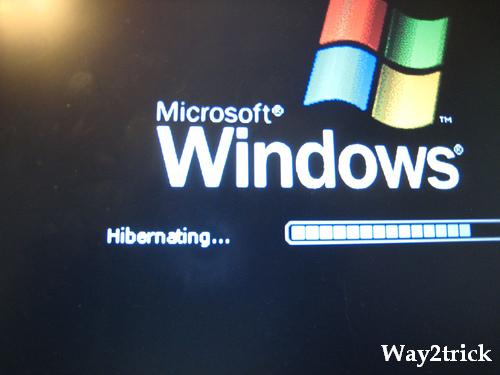In Windows
XP, Hibernation mode is a powered-off state in which the contents of the
RAM is dumped into a file at the root of the Windows drive (usually C).
When this mode is selected, the contents of active memory are copied
directly to a file, and immediately reloaded upon start up, letting you
pick up directly where you left off, in most cases.
Sometimes this causes undesirable operation, or if your computer is set to hibernate in the event of a low battery, applications can crash, causing valuable data to be lost. This article describes how to disable the hibernation feature altogether on your machine.
Sometimes this causes undesirable operation, or if your computer is set to hibernate in the event of a low battery, applications can crash, causing valuable data to be lost. This article describes how to disable the hibernation feature altogether on your machine.
Please note that you must be logged in as an Administrator and not a Limited Account in order to make this change.
Steps:-
1. Open your start menu.
2. Click on "All Programs".
3. Click on "Control Panel".
4. Click on "Power Options".
5. Click on "Hibernate".
6. Change settings to "Disable" Hibernate.
7. Click "Apply". You must do this to apply it--or it won't work!
8. Click "Ok" and that will stop the hibernating from occurring
- You can always turn it back on, later, if you like.
Tips:-
- For saving some battery energy for a laptop, if you want to turn off only the monitor then you can set "Power Options" to do that, or
- you may even turn off both the monitor and the hard drive after "different or the same" set lengths of time, but the CPU can remain awake.
Warnings:-
- Do not do this to a computer that is not yours without asking the owner first.


 05:25
05:25
 Ganesh Sharma
Ganesh Sharma







0 comments:
Post a Comment